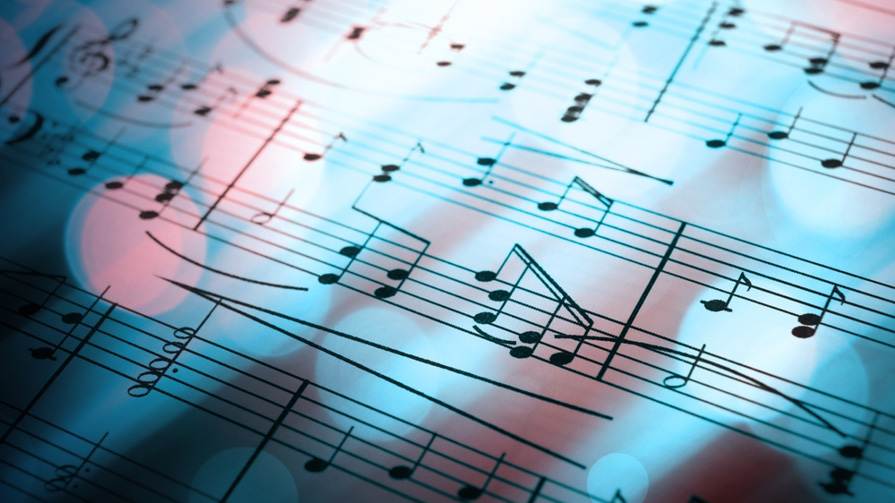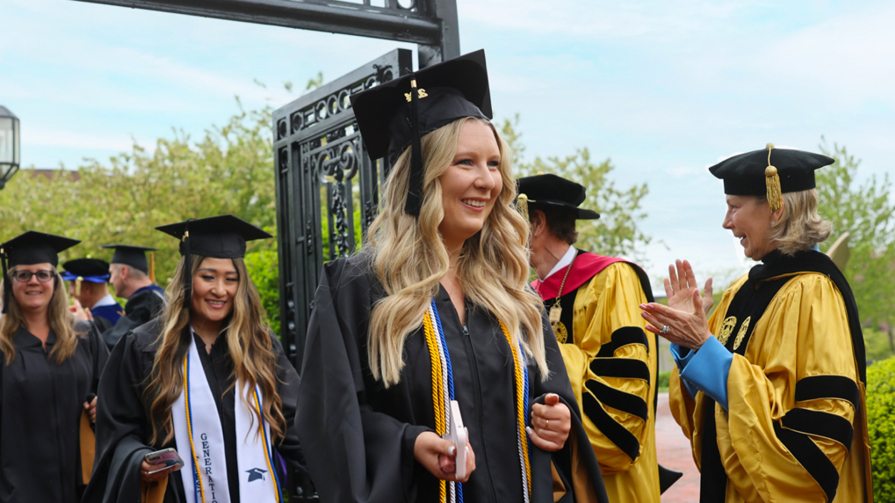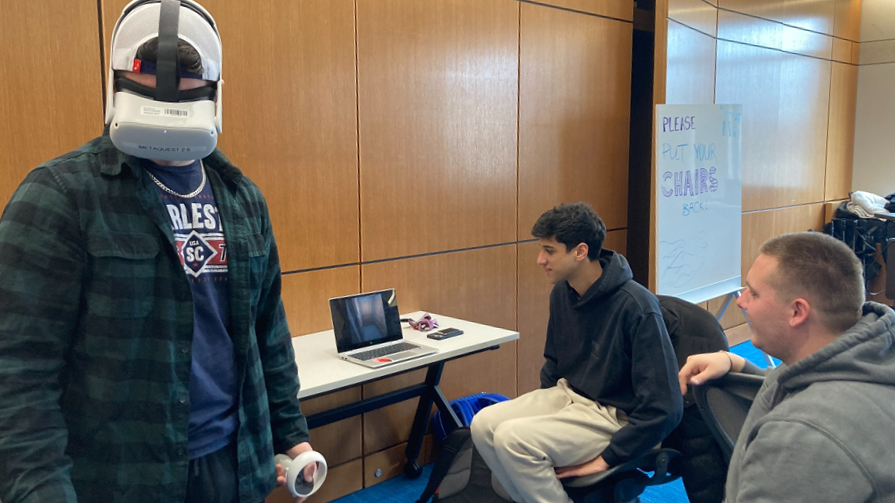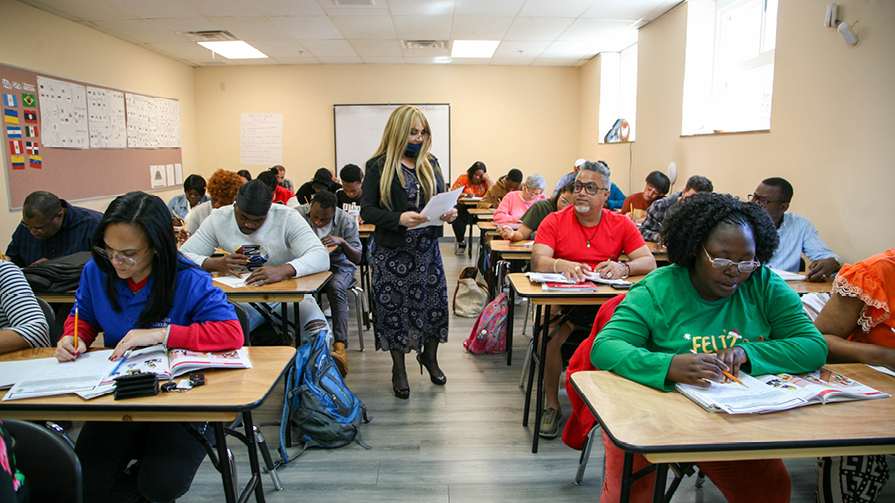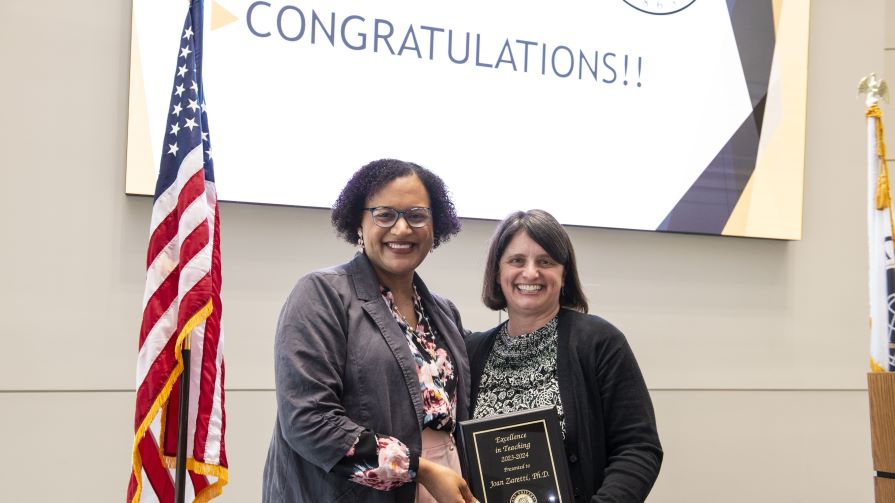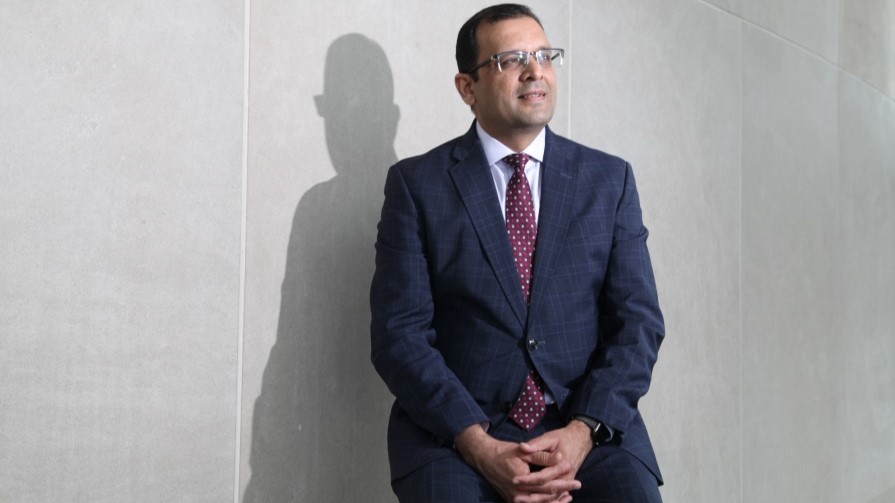Projected on the drop-down screen in Barbara Byers, Ph.D.’s classroom is a visual score of Wadada Leo Smith’s “Sonic Rivers.” Also known as graphic notation, the music is represented in visual symbols rather than traditional music notation. In this case, Smith’s score is a winding vertical line composed of red, yellow, and brown squares and rectangles clinging to various sections of the line. Toward the score’s top, the line gently bends to the right before twisting downward.
“Let’s try playing this,” says Byers, a vocalist and instrumentalist who has a background in writing operas and performing in European opera festivals.
Counting down their start, Byers’ 25 students begin singing and tapping their interpretation of the visual score. Their sounds progress from low to high notes and alternate between soft and loud. While this composition is one of the more experimental works students have analyzed this past semester, Byers purposely exposes students to a variety of music to help inspire them when they approach their own work.
Sharpening music skills
A new offering in the College of Arts and Sciences’ Arts and Creative Industries program, “Music Composition” teaches students how to digitally and acoustically compose music that can be used in a variety of formats — including concerts, film, and video games. Throughout the course, students focus on the broader methodologies behind composing music by considering how sounds are constructed and how individuals listen to music.
“We draw on everything from vocal overdubbing and soundscape art to traditional songwriting and ABAB format,” Byers, a History, Literature, and the Arts lecturer, says.
Undergrads cover a variety of artists and themes throughout the semester — from Pauline Oliveros, an academic musician, to Sun Ra, a jazz musician. The class also focuses on hip hop and modern music where they examine the lyric writing of Lana Del Rey, Nick Cave, and Tom Waits.
Byers notes that the course is open to all levels and no prior musical background is needed. By broadening students’ listening experience, she helps them consider the musicality of sounds around them — whether it's a humming generator or a truck traveling along a highway.
“I hope students take away a greater appreciation for how music works, how it functions, how important it is for all of us, and that they continue practicing composition,” Byers says, noting that students are building toward creating a composition for their final assignment.
Sparking creativity
Back in the classroom, students have just finished looking and listening to five visual scores that range in length and complexity. Tapping into students’ thoughts, Byers asks the group why visual scoring would be of interest to a composer.
“The fact that it is open to interpretation is probably a compelling idea, especially for a lot of people who are classically trained and are so used to following a very strict set of rules,” a voice in the back of the room calls out.
Ready to create their own visual scores for the remainder of class, Byers brings out a bin of markers, colored pencils, and construction paper. From listening to Karlheinz Stockhausen’s score, which includes repetitions, cluster points, and changing dynamics, to Cilla McQueen, whose vibrantly colored score could double as an abstract painting, Byers’ students have multiple avenues for approaching their musical work.
“The word 'composition' carries with it this weight of high and mighty Bach or Rachmaninoff,” Byers says. “But, in fact, music is one of the things that has united us and sustained our ability to function and move forward as a community and society.”
